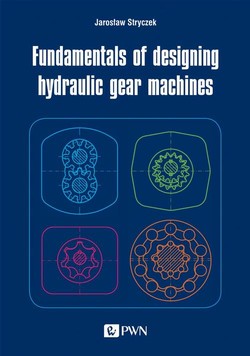Читать книгу Fundamentals of designing hydraulic gear machines - Jarosław Stryczek - Страница 8
На сайте Литреса книга снята с продажи.
2.1. General models of a pump and a motor 2.1.1. General model of a pump
ОглавлениеFigure 2.1 presents the general model of a gear. It consists of a shaft (1), which drives a gear system (2) located in a housing (3). In the drawing of the model, neither bearings supporting the shaft and the gears in the rotational movement nor minor sealing elements are marked, but they are there in the real model. In the gear system (2), there are the intertooth displacement chambers T which transport the working medium from the inlet zone I of the pump to the outlet zone O. In the housing of the pump, a system of channels CL and clearances G is created in order to direct the flow of the working medium going through the pump.
The transformation of mechanical energy Emech supplied by the shaft (1), into hydraulic energy Ehydr stored in the working fluid is performed in the following way: the pump sucks the working fluid from the tank through the inlet I into the intertooth displacement chambers T. Next, the chamber T shifts by the rotational movement (φ angle) in the system of channels CL and clearances G, transporting the working medium to the outlet O. On reaching the outlet, the chamber pumps the working fluid into the hydraulic system. Finally, the chamber T returns to the inlet O in order to start another work cycle. In the pump, there can be even several dozen chambers T which, while working one after another respectively, secure high displacement Ogt of the pump.
The motion of the chambers is generated by torque Mgt working on the drive shaft (1), and causes compression of the medium in the displacement chambers T. Consequently, in the process of displacing the working medium from the inlet zone I into the outlet zone O, the pressure of the medium increases from low value pI to high value po.
Fig. 2.1. General model of the hydraulic pump of groups 1–4.1 – shaft, 2 – gear system, 3 – pump housing, CL – internal channels, G – clearances, T – intertooth displacement chamber, I – inlet, O – outlet
The model is acceptable for all four groups of the hydraulic gear machines presented in Figure 1.2. which work as pumps. It is necessary, however, to explain certain issues concerning machines of the fourth group. Gears of those machines rotate with a planetary motion. It results in a number of suction-charging cycles performed by the chamber T during one revolution of the drive shaft (1). Therefore, a pump working in such a way could be referred to as a multiple-action pump. The model presented in Figure 2.1, however, refers to a single-action pump. Nevertheless, it can be applied to the multiple-action pump, yet it then will refer to a part of the revolution of the shaft, and to one suction-charging cycle. In the situation when the charging cycle is repeated a number of times, it is necessary to apply a complex system of channels CL for supplying and receiving working fluid from the displacement chamber T. During the flow through the channels, high resistance of the movement and problems with ‘self-sucking’ occur.
Thus, it is critical to provide overpressure on the inlet I, which is performed by the so-called charging pump.
In practice, such a solution is applied only in Orbitrol control block featured by the fourth group of the machines (presented in Figure 11.10).
